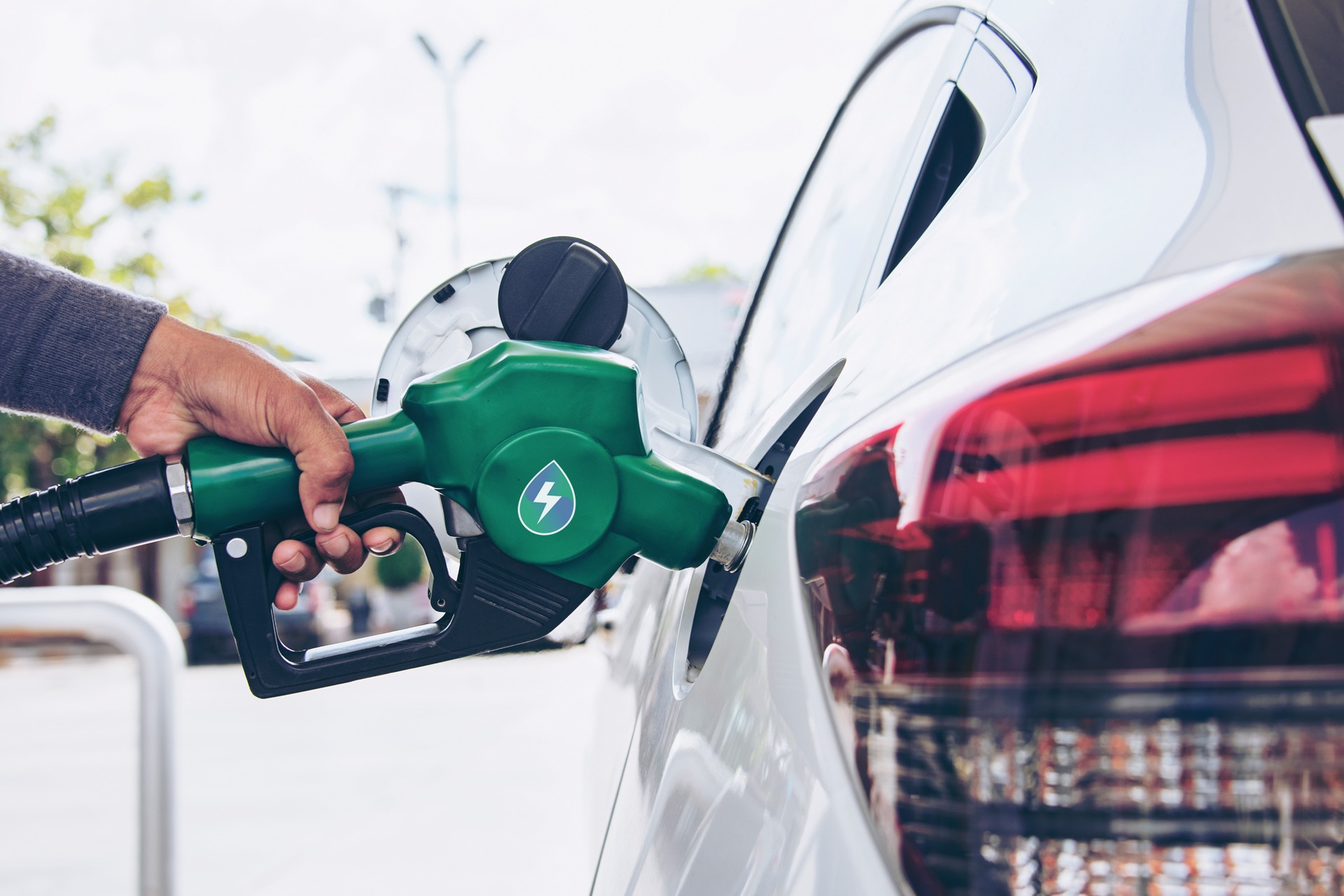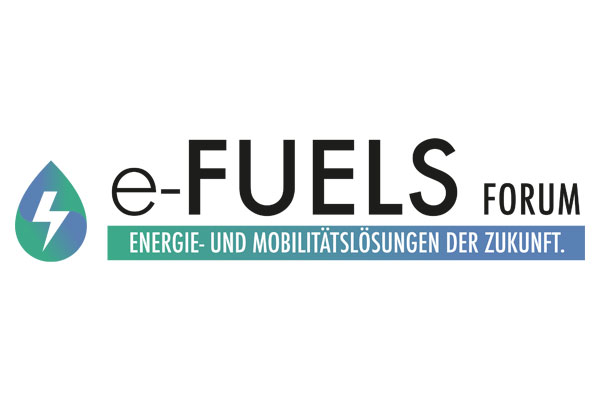FVV fuel studies on eFuels to the point
- FVV study: eFuels play a crucial role in achieving climate targets
- What actually is a life cycle analysis? Or: Why you can’t mix apples and pears. may compare with each other
- The most important results of the FVV fuel studies at a glance
- “The amount of data is enormous”: This is how the FVV fuel studies came about
FVV study: eFuels play a crucial role in achieving climate targets
From 2050, no net greenhouse gases are to be emitted in the EU. In a comprehensive series of studies commissioned by FVV e.V. // Science for a moving society(www.fvv-net.de), scientists have investigated energy carriers, i.e. everything that makes energy storable and transportable.
(e.g. fuels, hydrogen, batteries), and energy converters, i.e. machines that convert chemically or electrically stored energy into motion (e.g. internal combustion engines or electric motors). In particular, e-cars were compared with fuel cell vehicles and vehicles with combustion engines and eFuels. Importantly, the study authors considered all infrastructure needs and greenhouse gas (GHG) emissions from generation to use to recycling in a detailed life cycle analysis (LCA) in the analysis.
The surprising result:
All the solutions examined offer a comparably high level of sustainability over this comprehensive observation horizon if they – including the complete, sustainable energy supply chain – be introduced equally quickly. Not the choice of climate-neutral drive technologies per se, but the speed of their introduction is absolutely decisive for achieving the goal of a GHG-neutral, climate-friendly and resource-conserving road transport in the EU. The FVV study was the first to investigate how sustainable Introduce technologies as quickly as possible under the most favorable legal conditions let The fastest way to achieve GHG-neutral mobility is through a clever mix of different Achieving Technology Pathways. This means that even the ambitious German target of having to be climate neutral. Under ideal regulatory conditions (accelerated licensing procedures, long-term viable and attractive business models), this could even be achieved even before 2040.
Fleet-compatible eFuels play a crucial role in the best possible technology mix for achieving climate targets, as they offer the unique option of making existing vehicles GHG-to operate neutrally. The establishment of extensive eFuel production over the next ten to twenty years is thus of crucial importance for achieving the climate targets. Thereby the Driving with eFuels is cheaper in the long term and tax-adjusted on balance than driving an electric car. driving.
What actually is a life cycle analysis?
When comparing electromobility with liquid or gaseous fuels , many studies on the topic of vehicle efficiency and sustainability only consider the use of the vehicle (tank-to-wheel). When power generation is also taken into account (Well-to-Wheel, source to wheel), the potential of sustainable fuels is often not considered with included. For example, the use of battery electric vehicles with different Stommixes calculated and then compared with vehicles with internal combustion engines, which are be operated exclusively with fossil fuels. In the process, the climate-friendly use of of eFuels with the argument that eFuels do not even exist. How quickly you complete energy systems – both greenhouse gas (GHG)-neutral electromobility and the production of GHG-neutral eFuels – is considered in practically no study. These analyses focus only on a particular stage of the life cycle or on specific technologies and thus inadequately capture the reality of GHG value chains. In particular, there is a lack of ramp-up scenarios with realistic introduction speeds of individual GHG Reduction Technologies.
However, in order to seriously compare different forms of propulsion, a complete system life-cycle assessment (LCA,) must be applied ,which takes into account all GHG emissions generated throughout the life cycle of a product without exception (vehicle construction and scrapping, construction and operation of the entire energy infrastructure , i.e. wind turbines, solar panels, power lines, gas stations). In addition, it is mandatory that the of complete GHG-neutral technology pathways must be taken into account. be taken into account.
For this reason, the authors of the FVV Fuel Studies IV and IVb have prepared a detailed life cycle analysis.
Source: FVV: How fast is sustainable?

The most important results of the FVV fuel studies at a glance:
- A mix of greenhouse gas (GHG)-neutral energy sources and corresponding vehicle propulsion systems can significantly accelerate the transition to GHG neutrality of the road transport sector in Europe. If policymakers create the right legal framework today (2023), we could already be driving GHG-neutral cars by 2040 with an ideal technology mix!
- The key to minimizing GHG emissions is to phase out fossil fuels as quickly as possible. This can only be achieved if Europe introduces sustainable eFuels on a large scale, making it possible to operate the existing fleet in a climate-neutral manner. Despite the long lead times and planning horizons for building the necessary synthesis plants, eFuels can significantly accelerate GHG reductions. If policymakers create the right legal framework today, we would be able to run around 17 percent of the entire European vehicle fleet on eFuels as early as 2030, and this figure would rise to 77 percent by 2035.
- Many single-technology scenarios cannot achieve GHG neutrality at all by 2050. For example, a maximum defossilization rate of only 76 percent is possible by 2050 with battery electric vehicles alone. This means that only 76 percent of vehicles can be powered by green electricity; the rest are still on the road using fossil fuels and emit a corresponding amount of GHG (CO2).
- With an electric vehicle-only scenario, 39 percent more GHGs are cumulatively emitted by 2050 than with an optimal technology mix (which is more than is emitted in all of Germany within five years). If there were no bottlenecks in cobalt supply and the power grid, a 100 percent defossilization rate by 2050 would theoretically be possible with electric vehicles alone – but then still with 28 percent more GHG emissions than necessary and with 27 percent higher costs compared to an optimal technology mix.
- A ban on internal combustion engines from 2035 would lead to higher GHG emissions than necessary. It also reinforces dependencies on critical technical ramp-ups of the necessary infrastructure for alternative propulsion technologies along the entire value chain. It also limits the ability to accelerate further defossilization of the vehicle fleet through the use of compatible synthetic energy sources such as eBenzine and eDiesel in vehicles with internal combustion engines.
- Ultimately, the goal is to optimize “greenhouse gas system efficiency” rather than the “energy efficiency of drive types.” For example, the CO2 fleet regulation for vehicles only imposes a limit on tank-to-wheel GHG emissions, without the
upstream chain to be taken into account. Only what comes out of the tailpipe counts, but not what coal-fired power plants emit when producing electricity for driving the cars and for battery cell production.
How the FVV fuel studies came about
“The extensive, detailed data base is the real treasure of the study, which makes it so different from all the other studies,” says study director Dr. Ulrich Kramer. The quantity and quality of required input data that such a life cycle analysis requires is enormous. Therefore other studies usually draw on existing databases. Thus they are based always based on the same old data sets, which are completely insufficient for a look into the future. are.
The more than 60 specialists of the FVV working group have, in the four years that the FVV- Fuel studies IV and IVb lasted, in countless technical meetings all the Input parameters put to the test. In numerous cases, the assumptions were from other studies as unrealistic and outdated. In many studies, for example neglects the fact that in a fully sustainable energy system, using only wind and solar as energy sources, energy energy sources, energy storage systems will be needed to provide energy during the so-called during the so-called “dark lulls” when neither the sun is shining nor the wind is blowing sufficiently to blows to secure the energy supply.
Furthermore, people often only calculate with standard vehicle consumption figures, forgetting that in winter the vehicle interior must be heated. Other studies fantasize theoretical tax rates on future energy sources into the study instead of looking at pure costs, and simulate “emotional buyer behavior” in this way. “With such sleight of hand, you can make any generate any result. This has little to do with science,” emphasizes Dr. Kramer.
In order to eliminate these grievances, the FVV working group developed a purely fact-based techno-economic analysis and put every figure to the test. Since the advisory board participants from the entire political spectrum (from Aramco to ifeu), the balance of the data is ensured. balance of the data is ensured, even if in a purely quantitative comparison of studies, the FVV quantitative comparison of studies, the FVV study with its assumptions is often which mostly copy from the same databases.
In addition, care was taken in the FVV study to avoid best-case scenarios as far as possible. were assumed, but realistic average values. For example, it was not assumed that individual transport in Europe will decrease drastically or that the Energy consumption drops to below 2,000 TWh/year. Nor do the authors assume extreme efficiency improvements, which serve as the basis for many scientific publications.
“Particularly in terms of energy security and the economic security of Germany as a business location , it would be fatal toplanGermany’s energy future on the basis of best-case scenarios,” says Dr. Kramer.
Source: https://www.fvv-net.de/science/wie-schnell-geht-nachhaltig
Newsletter subscription
Notes on data protection
Our free newsletter informs you regularly by e-mail about product news and special promotions. The data you enter here will only be used to personalize the newsletter and will not be passed on to third parties. You can unsubscribe from the newsletter or revoke your consent at any time by emailing . Your data will be deleted within 2 months after termination of the newsletter receipt, provided that the deletion does not conflict with any legal retention obligations. By sending the data you have entered, you consent to the data processing and confirm our privacy policy.

